8 Effective Yoga For Vertigo: Say Goodbye to Dizziness
If you get blurred vision, or feel dizzy then it's time to find your balance with yoga for vertigo. Here, discover 8 potent yoga poses to bid farewell to vertigo.

Many wonder if yoga for vertigo can really help with its symptoms. Vertigo makes you feel like you're moving or that things around you are, even when they're not. It's a dizzying experience. Luckily, yoga can assist in finding your equilibrium. Even basic yoga poses can boost your overall health by enhancing blood flow and strengthening the nervous system. Here, let's look into different yoga exercises to get rid of vertigo.
What Is Vertigo?
Vertigo is a condition that messes with your balance and makes you feel dizzy. It often causes an unsettling disruption in the balance and equilibrium of the brain. This typically impacts the inner ear's vestibular system responsible for the direction of motion.
Thus vertigo can be classified into two types:
- Central vertigo - This is due to the issues in the area of the brain that regulates how the body moves.
- Peripheral vertigo - This is the most common vertigo which is brought on by issues with the inner ear's balance systems.
This vertigo and dizziness affects about 15 to 20% of adults annually. About 1/4th of complaints of dizziness are due to vestibular vertigo, which has an annual incidence of 1.4% and a 1-year prevalence of about 5%. This also increases with age and is more common in women than in men (1).
Causes - There are various causes, spanning from a drop in blood flow to the ear, accumulation of fluids or calcium, to viral infections (2). Even common viruses causing colds or flu can assault the inner ear, triggering severe vertigo. Brain damage could also result in hearing loss, nausea, and dizziness (3). In cases, syphilis, Meniere's disease, vestibular neuronitis, tumors, or multiple sclerosis could upset balance too (4), (5).
Symptoms of Vertigo - Vertigo's symptoms encompass headaches, blurred vision, instability or lack of balance, tinnitus (ringing noises in ears), and the sensation of being pulled (4), (6). These symptoms can stick around for a short time or linger for months, causing significant problems in your daily life.
There are conventional allopathic medical treatments, but if you like natural solutions, yoga might help with its calming effects.
How Does Yoga Help Manage Vertigo?
Yoga asanas offer various poses that focus on the nervous system and inner ear balance. These poses activate the sympathetic and parasympathetic nervous systems, boosting blood circulation in the head and body (7). This helps in enhancing concentration and focus.
However, during a vertigo episode, rest is recommended until symptoms ease. Usually, BPPV - Benign paroxysmal positional vertigo is commonly linked to a mild or strong head blow. So if you have BPPV try to avoid jerky neck movements or even yogas (8). Here are 8 restorative yoga poses with proper guidelines that encourage healthy blood flow to the brain cells, aiding in vertigo relief.
Different Yoga Poses For Vertigo
During a vertigo attack, finding relief can be as simple as lying quietly in a dim room, which may help ease nausea and spinning sensations. Also, stressful situations should be avoided, as anxiety can worsen vertigo symptoms (9). In most cases, medications are suggested. But yoga serves as the best non-invasive and functional tool to reduce vertigo symptoms.
Especially, the selected 8 poses activate the nervous system and inner ear's balance centers, fostering focus and concentration.
1. Nadi Shodhan Pranayama

Here's a simple yoga breathing technique called pranayama that can be really calming. It's like a natural tranquilizer for your heart rate and brain waves (10). This technique also boosts the capacity of your lungs to hold oxygen, calms your mind, and helps you focus better. It's like a detox for your blood vessels, getting rid of harmful stuff and restoring balance. It also gives your nervous system a good cleanse.
Here's how you do it:
- First, sit comfortably and take a few slow breaths.
- Place your right-hand thumb gently on your right nostril and your ring finger on your left nostril.
- Breathe gently through both nostrils.
- Now close your left nostril with your ring finger and breathe out through your right nostril.
- Then breathe in through your right nostril, then close it with your thumb and breathe out through your left nostril.
- Repeat this pattern for about 5 to 10 rounds and try to finish your last round by exhaling through your right nostril.
2. Balasana
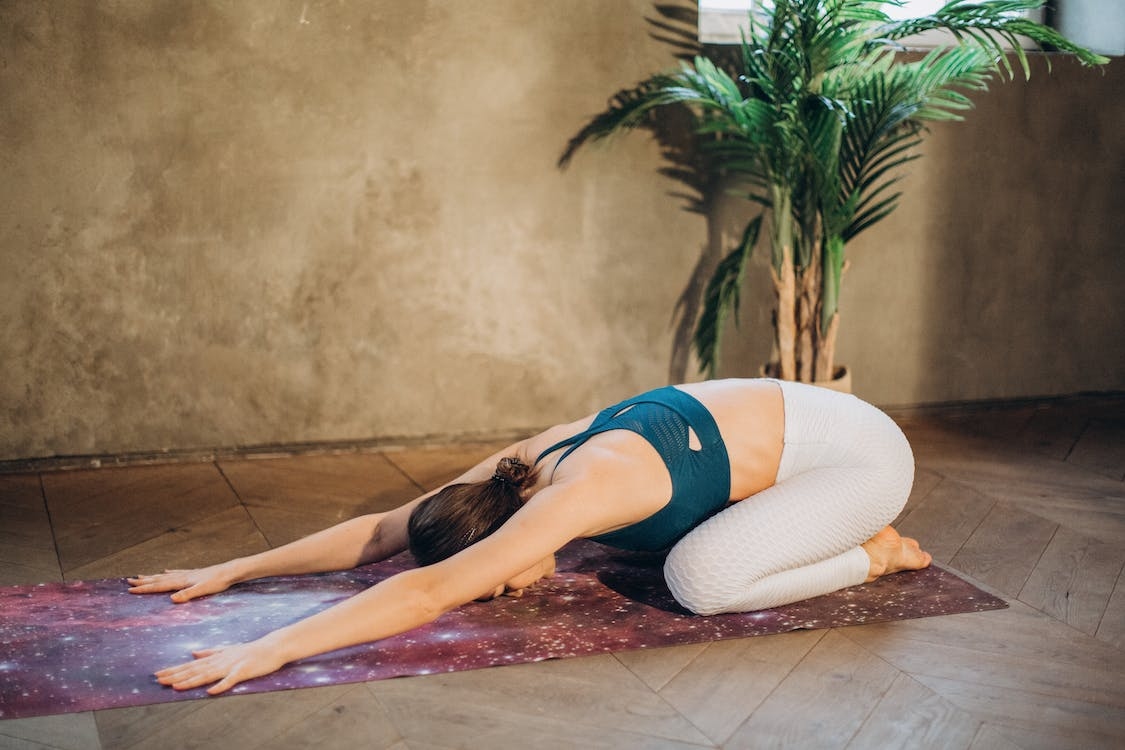
Balasana, or the child's pose, is like how a baby stretches – it's great for your whole body, especially your hips. This pose not only improves balance and strength but also brings calmness and eases your nervous system (11). Practicing this could really be helpful when dealing with vertigo.
- For this, bring your big toes together and sit back on your heels. Spread your knees apart, about hip-width distance.
- Inhale deeply, then exhale and gently lower your torso between your thighs.
- Feel your sacrum spreading across the back of your pelvis.
- Gently lift the base of your skull away from your neck.
- Now reach your hands forward to stretch or reach them back towards your feet, letting your arms rest on the ground next to your body with palms facing up. Let your shoulders spread wide and relax.
- Balasana is a resting pose. Thus stay in it for about 30 seconds to a few minutes.
- To come out of the pose, lengthen your front body first, then take a deep breath in as you lift from the pose.
3. Viparita Karani
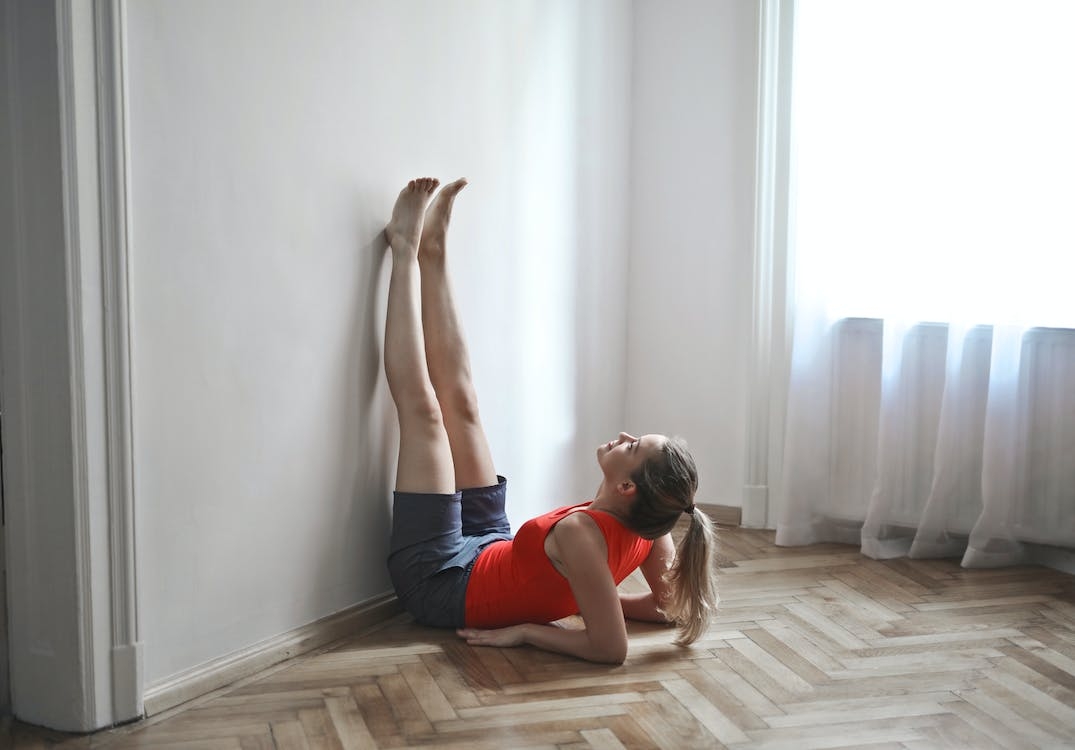
Viparita Karani, also known as 'the legs up the wall pose', is a relaxing yoga posture that's super easy. You just lie down with your legs up the wall. This pose is a great help for people with vertigo. It calms your mind, eases headaches, and even improves venous blood flow and relaxation (12).
- Find a wall and sit facing it. Your feet should be on the floor, stretched out in front of you.
- Then lie on your back and take deep breaths. Your legs should be pressing against the wall, with your feet facing up.
- Keep your tailbone closer to the wall and make sure your back and head are on the ground. Your body will form a L-shape or 90-degree angle.
- Now it's time to lift your hips up and stay in this pose for at least 5 minutes.
- To come out of the pose, gently bend your knees and move your body away from the wall. Roll onto your right side, curl up in a fetal position, and then slowly sit up.
4. Supta Baddha Konasana
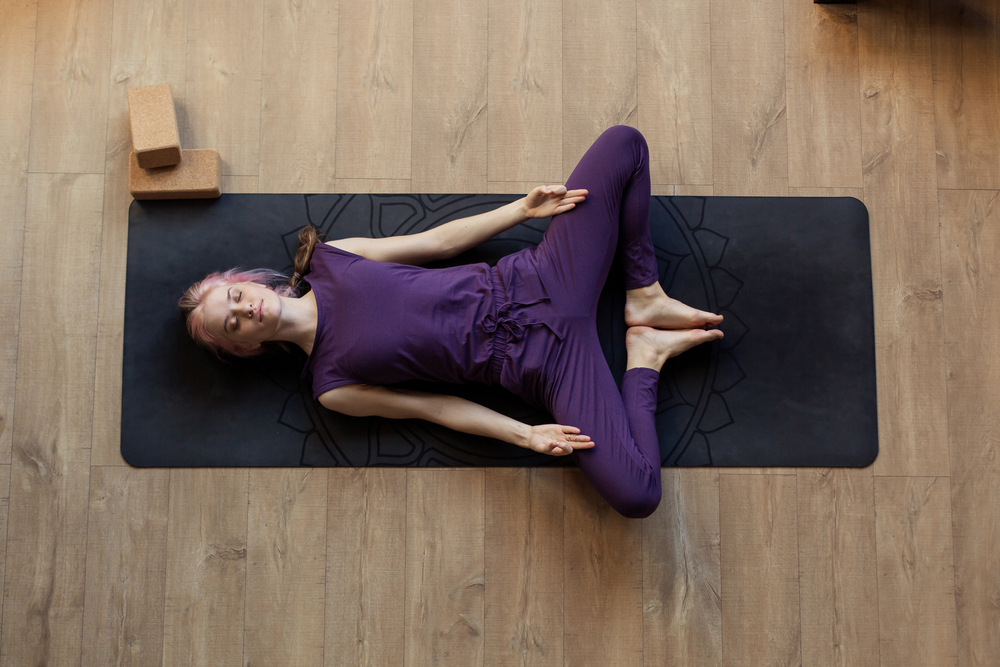
This ‘reclining bound angle pose’ is the perfect yoga for dizziness and quickly helps with balance. It's great for boosting blood flow all over your body, even your head. Plus, it's super comforting and calming for your mind and nerve connectors (12). To do this asana:
- Lie on your back and bend your knees. Put the soles of your feet together, and close to your hips.
- Let your knees drop open to the sides.
- Take a deep breath in and stretch your arms over your head along the floor. Join your palms and cross your thumbs.
- Breathe and hold this for a few seconds.
- When you're ready to stop, exhale and gently let your arms and legs go.
5. Paschimottanasana

This seated forward bend pose is like a stress reliever and immune booster. It helps with emotions, like anger and anxiety, and promotes better blood flow in the head for vertigo relief. It is also recommended for women as it regulates the menstrual cycle. Here's how you do it:
- Sit in an upright position and stretch your arms up over your head, reaching toward the ceiling.
- Now start bending forward and inhale to make your spine longer.
- Exhale to go deeper into the bend. Imagine your belly resting on your thighs, not your nose on your knees. This keeps your spine long.
- Keep your neck in line with your spine, not craning up or dropping down too much.
- Once you're fully bent forward with a long spine, hold onto your ankles or shins, whichever you can reach.
- Hold this position for about 30 to 40 seconds before relaxing.
6. Halasana
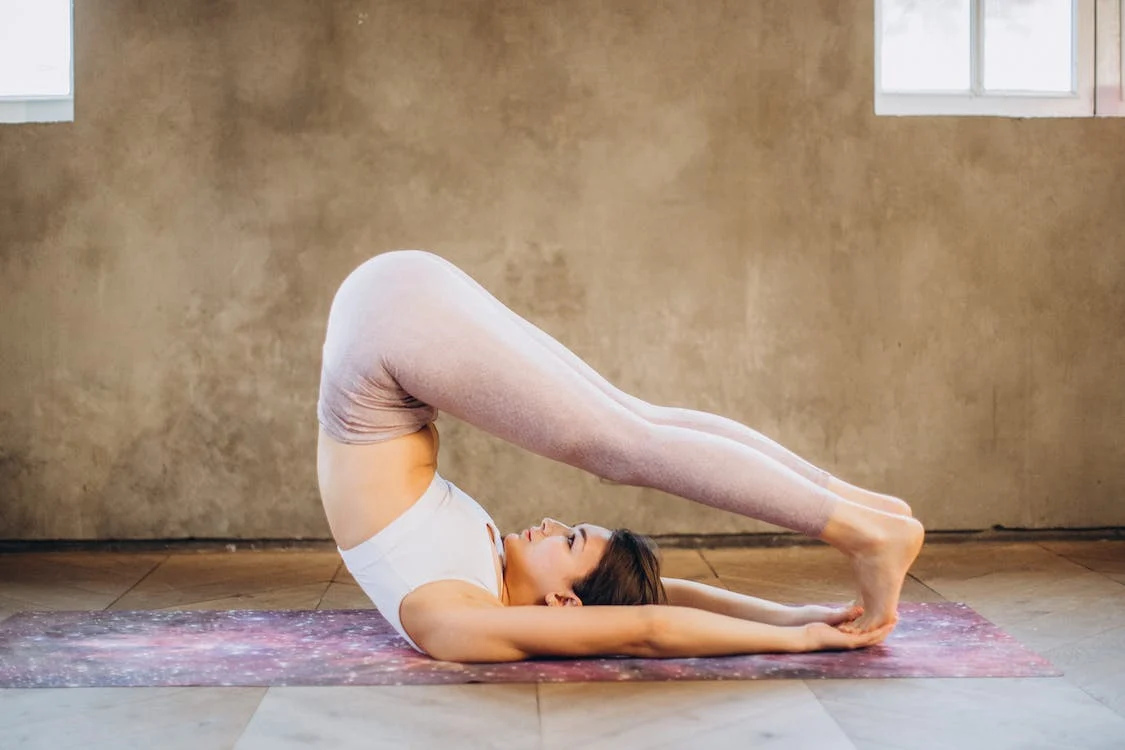
This upside-down pose is really good for strengthening your neck and working on your balance system - that's your inner ears and nerves. It's also great for things like relieving headaches, helping with sleep, and getting rid of stress. Here's how you do it:
- Lie on your back and put your hands on your waist. Then slowly lift your feet off the ground.
- Now, start moving your legs behind your head, going as far as you comfortably can. Make sure your toes are in line with your head.
- Put your arms straight under your body and stay in the pose for as long as you feel good.
- Gently come out of the pose by lifting your legs again.
7. Salamba Sirsasana
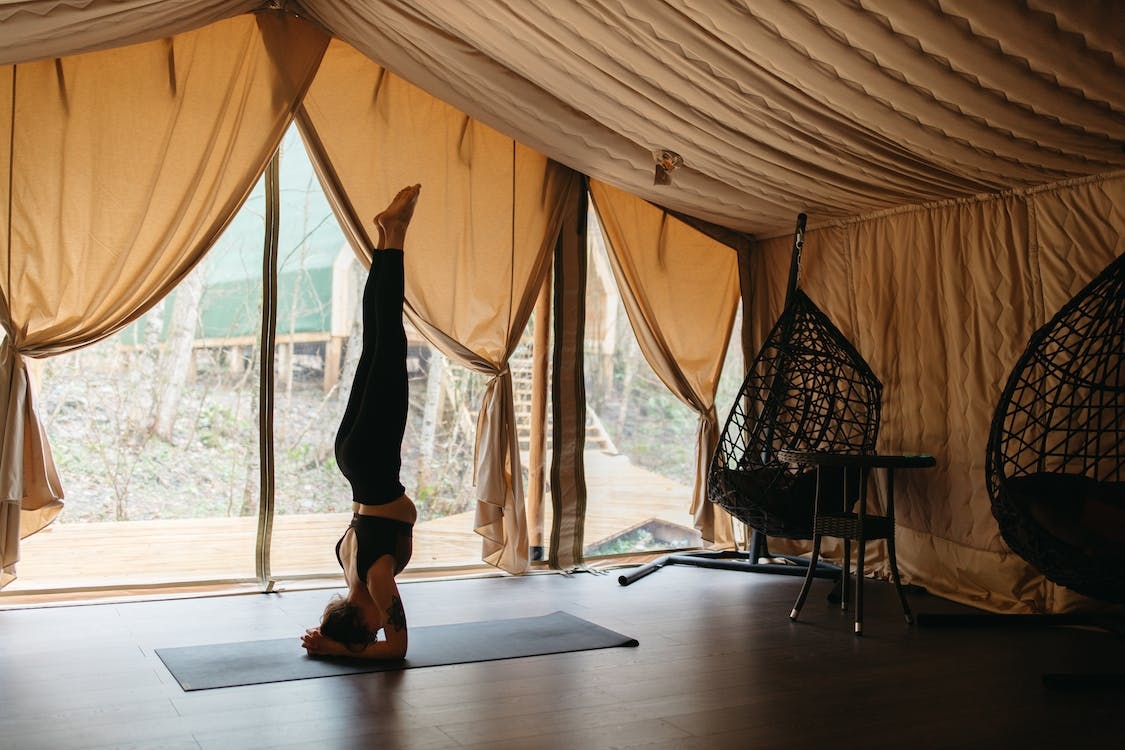
This pose is like a headstand where you're upside down. It does wonders against gravity by sending more energy to your head, which can help with recovery or relief from vertigo symptoms. Here's how you do it:
- Kneel down on the floor and place your arms on the ground in front of you and link your fingers.
- Put your head on the floor, with your palms holding your head.
- Breathe in and lift your knees off the ground, then move closer to your elbows.
- Exhale and lift your feet off the floor.
- Keep your legs straight up, like a vertical line.
- Hold this pose for a few seconds, then try to hold it for longer over time.
- When you're done, slowly lower your feet down.
8. Shavasana or Savasana
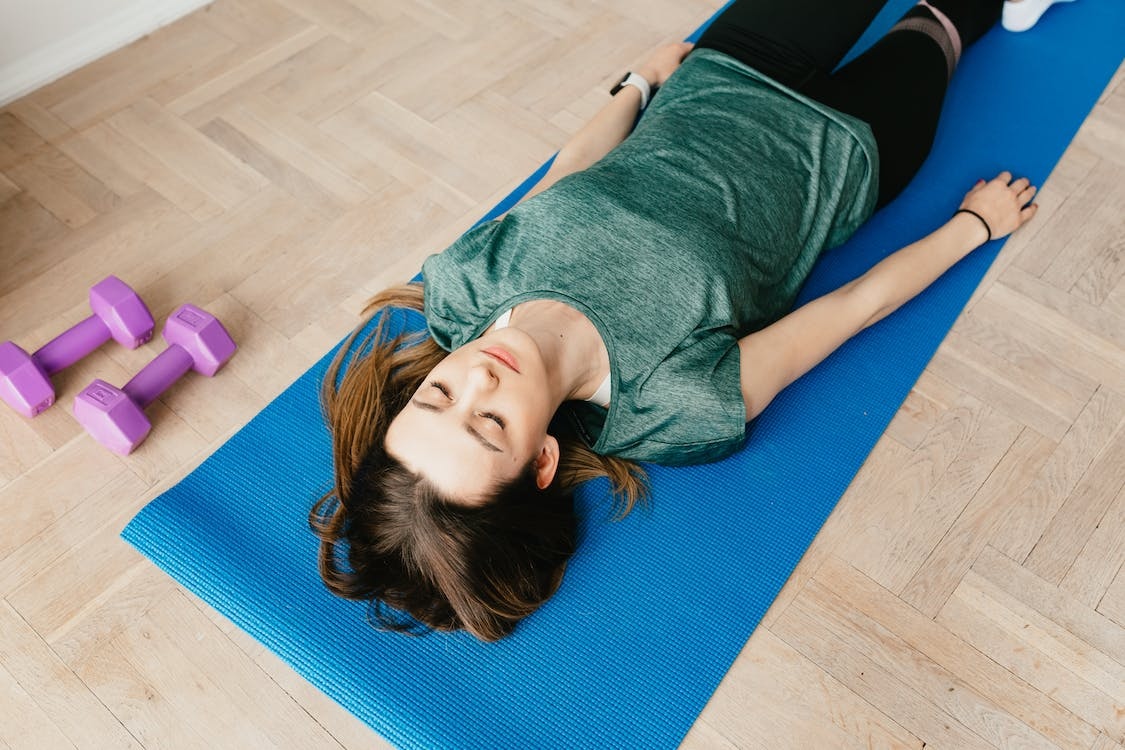
This yoga pose is like a refreshing ending to your yoga session. It chills out your body, soothes your mind, and wipes away all the tiredness and stress. It's great for regaining focus and calmness, and it's awesome for tackling vertigo quickly (12). Here's how to perform the corpse pose, or savasana:
- Lie down flat on your back and close your eyes.
- Stretch your arms and legs away from your body.
- Breathe evenly and try to let go of the tension.
- Make sure your whole body is relaxed and pay attention to your thoughts.
- Keep practicing until you get better at focusing and calming your mind.
Yoga For Vertigo - Things to Keep in Mind
Keep in mind, yoga won't magically cure vertigo, but it can help ease the symptoms. The yoga poses we've talked about can do the following good things:
- Ease anxiety and stress.
- Help you find physical and nervous balance.
- Boost blood flow to brain cells and neck.
- Helps with breathing.
- Create peaceful vibes.
So, these poses can be a real boost for your overall well-being. However, people with recent surgeries, high blood pressure, heart ailments, spine problems, and pregnant ladies should try to get a nod from their doctor before diving into certain yoga techniques. Once you're set, find a certified yoga teacher to guide you. Here are some tips to consider while doing yoga for vertigo:
- Go slow when standing up or sitting down after forward bends.
- Have a wall nearby for support in case you wobble.
- Some poses where your head position hangs might make you dizzy. So try to avoid those in case of severe vertigo.
- Breathe steadily, and don't try to hold your breath for long.
Other Yoga Asanas For Vertigo to Give a Try
Regular practice of yoga can work wonders on the effects of vertigo like dealing with dizziness by boosting the flow of blood in your head, making your nervous system stronger, and getting those balance centers moving. Here are a few more yoga poses for vertigo to give a shot:
- Downward Dog Posture (Adhomukha Svanasana)
- Crocodile Posture (Makarasana)
- Karna Randhra Dhauti (ear cleansing yoga)
If you liked the nadi shodhan pranayama, then you can also give these breathing exercises for vertigo a try:
- Ujjayi Pranayama
- Bhramari Pranayama
And if you're up for starting with some basic hand gestures (mudras), try these:
- Shanmukhi Mudra
- Yoni Mudra (calms facial nerves)
Conclusion
Yoga for vertigo is a great way to dodge the trouble. It aims to lower stress and anxiety, improve your body's balance, and make breathing smoother. These might even clear vertigo-related symptoms, like migraines and dizziness, by giving your brain more oxygenated blood. Also, by making yoga a regular thing, you can bring back balance to your body and mind. So, it's not just for vertigo – adding this to your routine can boost your overall health as well.
ALSO READ: Yoga Asanas for Glowing Skin to Naturally Awaken Its Radiance





 JOIN OUR WHATSAPP CHANNEL
JOIN OUR WHATSAPP CHANNEL


































































































